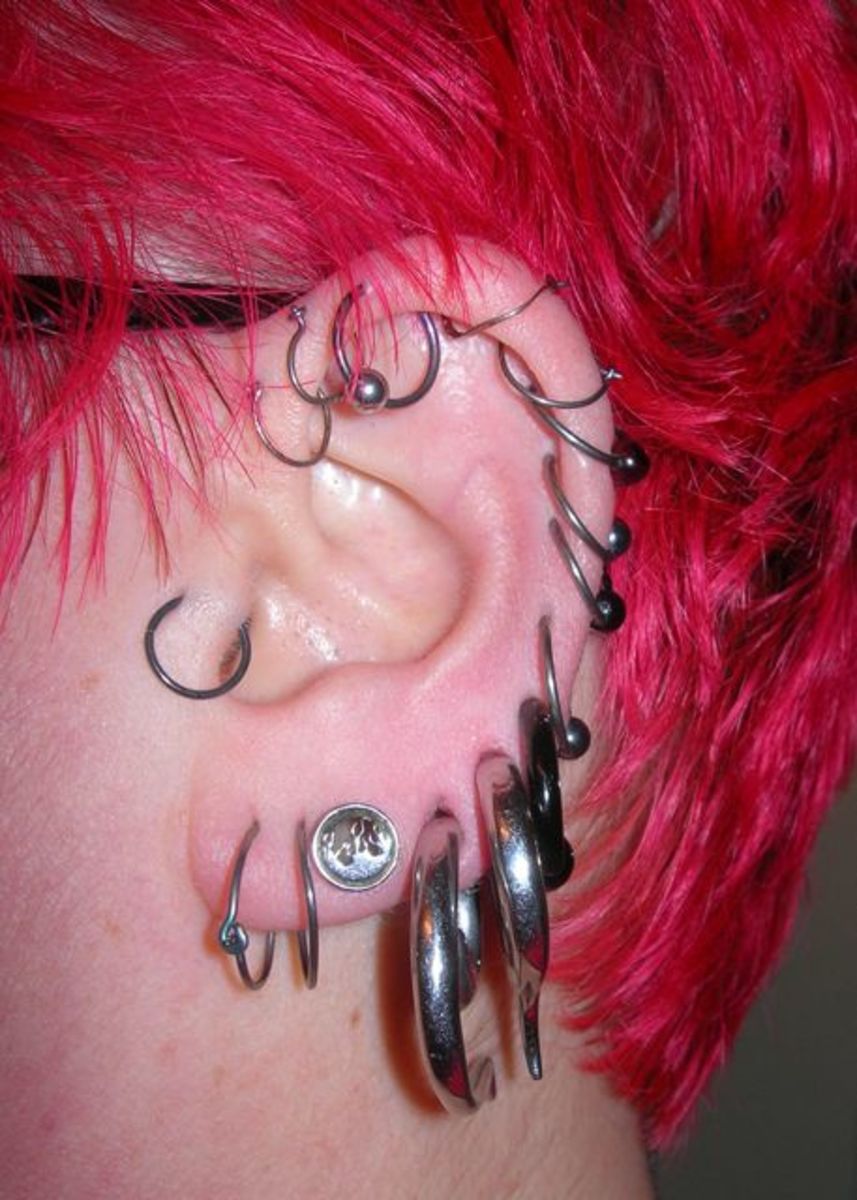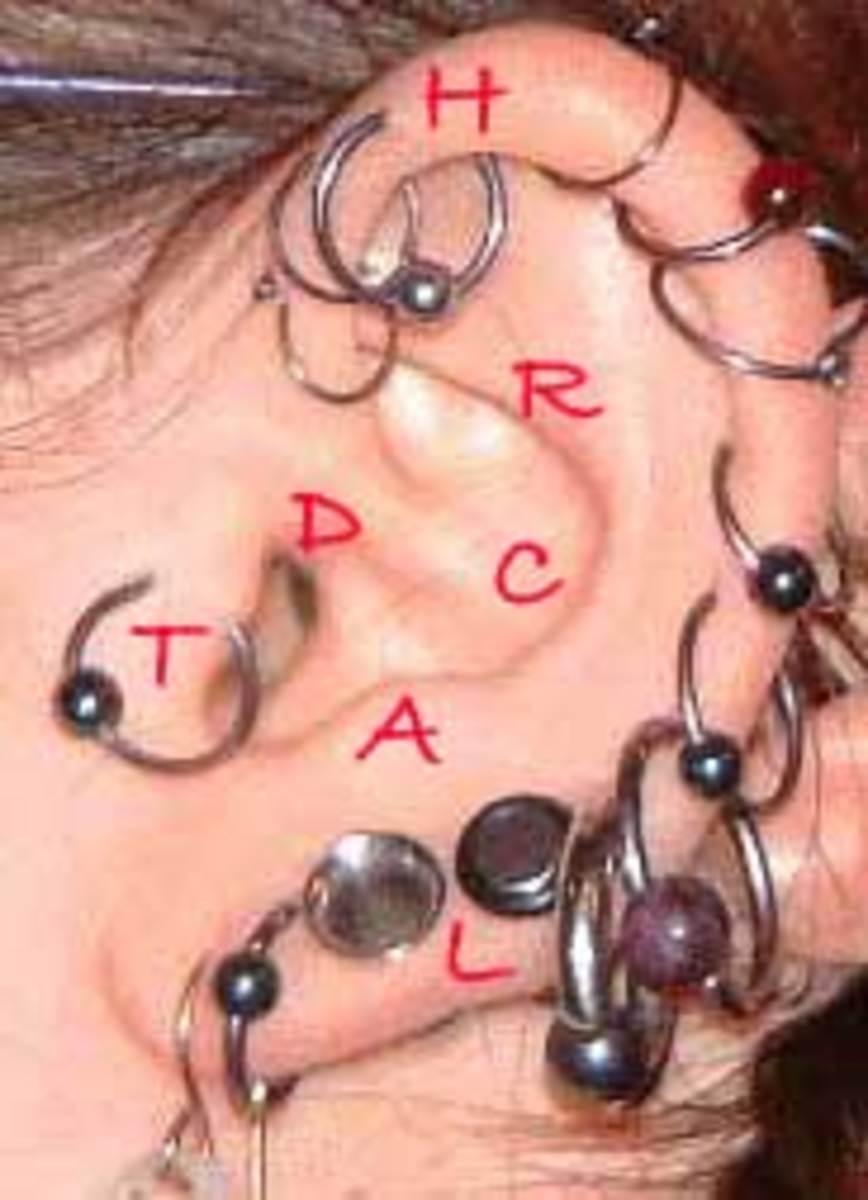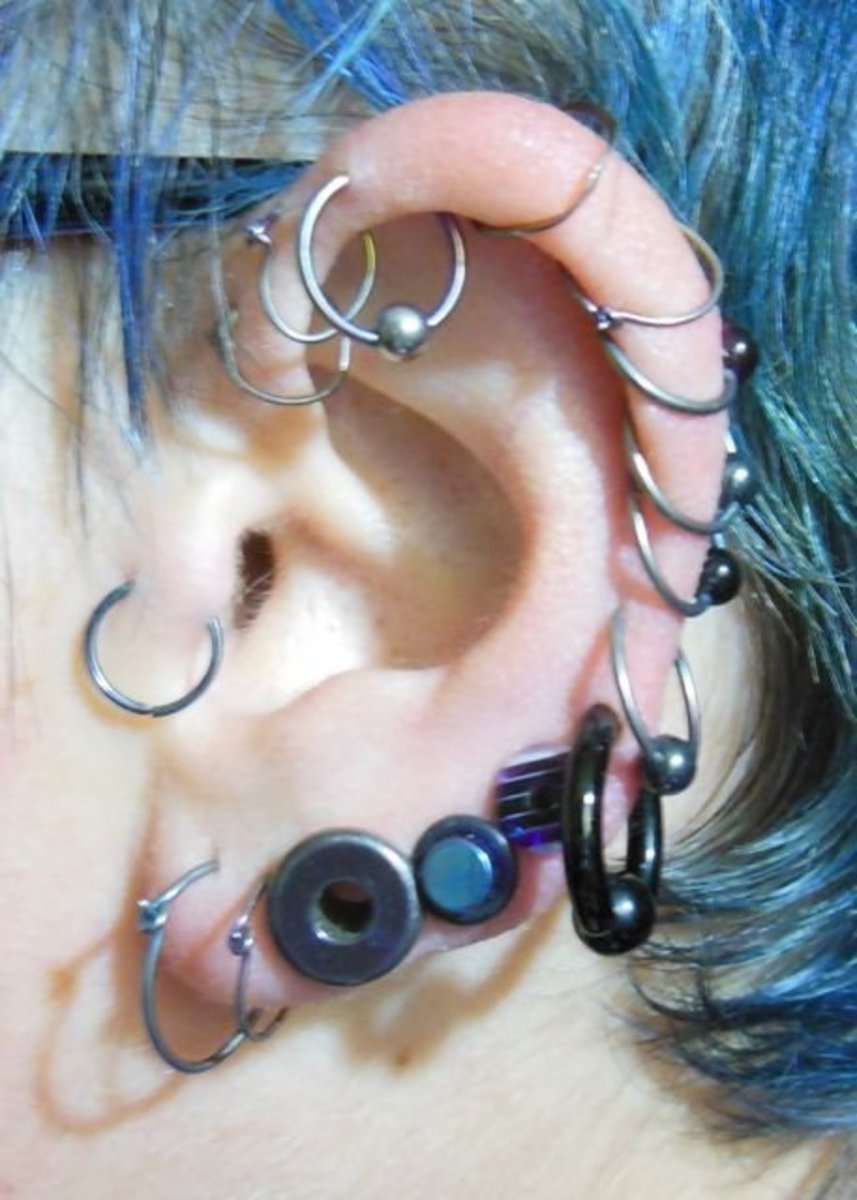On Ears and Piercing
No one knows how the idea of decorating or piercing the ears first started, but different cultures all over the planet took up the practice. Ear piercing ranges from simple holes made to allow for thin wires that hold larger ear jewelry to enlarging the piercings and jewelry in imitation of traditional tribal practices of South Pacific and African cultures. In some cultures, ear piercing is done in infancy or childhood, and in others it is permitted alongside rites of passage or when a certain advancement towards or into adulthood happens.
With globalization, people have become aware of the many variations in ear piercing styles and practices, and modern Western piercing fans now take influence and inspiration from within and outside their own cultures.
An Earring Collection

Earring Poll
How many earrings do you have?
- None yet, but I’d like to get my ears pierced.
- I have the classic one earring in each ear.
- I have my ears double-pierced.
- I have 5 to 11 ear piercings.
- I’ve got over one dozen ear piercings.
Ear Piercing Locations

Different Types of Ear Piercings
Now that mainstream piercing has moved well beyond the lower ear lobe, you can see a lot of different types of ear piercings in people’s ear now. Here are some of the most popular.
- Lobes: This area of softer tissue at the bottom of the ear is the most-commonly pierced area and the easier to heal. One variation you see now is stretched lobes, where the piercings have been enlarged to allow a much thicker gauge of jewelry.
- Anti-tragus: It’s still pretty rare, but a few folks have pierced this distinct piece of cartilage adjacent the tragus.
- Tragus: This small chunk of cartilage is just forward of the opening of the ear and handles a piercing fairly well, however, it can be hard to heal for users of earbud-style headphones.
- Daith: The name for this unusually-placed piercing comes from the Hebrew word for “wisdom.”
- Conch: Piercing the shell of the ear can be complicated and requires advanced piercing/medical training.
- Rook: This name specifically refers to piercings in this one particular ear ridge. People without this fold in their ears can’t get this piercing.
- Helix: Tends to refer to the rim piercings at the top of the ear. Piercing all along the ear rim has grown a lot in popularity in Western culture.
Jewelry Wire & Gauge Size Conversion Chart
Once upon a time, earrings were just whatever size earrings were. However, with the rediscovery and popularity of large gauge ear piercings, earrings now come in lots of different sizes. The standard earrings that you buy with little wire loops, hooks or posts tend to be 20g-18g in size. The smaller the number, the larger the wire size. Once you get larger than 000g, earrings tend to be named using their English/standard measurements, i.e. 1/2″, 3/4″, etc.
Gauges/Inches/Millimeters
| Jewelry Gauge | Inches | Millimeters |
|---|---|---|
| 20g | .032″ | 0.8mm |
| 18g | .040″ | 1.0mm |
| 16g | .061″ | 1.3mm |
| 14g | .064″ | 1.6mm |
| 12g | .081″ | 2.1mm |
| 10g | .102″ | 2.6mm |
| 8g | .128″ | 3.3mm |
| 6g | .162″ | 4.1mm |
| 4g | .204″ | 5.2mm |
| 2g | .257″ | 6.5mm |
| 0g | .324″ | 8.2mm |
| 00g | .364″ | 9.2mm |
| 000g | .364″ | 10.0mm |
| x | 7/16″ | 11.1mm |
| x | 1/2″ | 12.7mm |
| x | 9/16″ | 14.2mm |
| x | 5/8″ | 15.8mm |
| x | 3/4″ | 19.0mm |
| x | 7/8″ | 22.2mm |
| x | 1″ | 25.4mm |
Tunnels and Plugs

Shrinking or Closing Ear Piercings
Reversing the process of ear piercing—that is to say, reducing or closing a hole made in the ear—can sometimes be a tricky and/or costly process. For the most part, regular-sized ear piercings will just shrink and close if you stop wearing jewelry.
With enlarged piercings, how much the hole will shrink will depend on how big the holes were stretched, how long the body modification has existed and how elastic the individual’s skin and ear tissue are. People with more elastic-like ear tissue sometimes find that larger piercings don’t close down all the way or even stay fairly large.
Ear tissue is a bit different from other skin and tears or rips along the edges of the ear will not heal back together without being repaired by a plastic surgeon. So if an earring is accidentally torn out, or if you have very large stretched piercings, you may need to get medical attention if you wish to have your earlobe look much like it did before being pierced. For something like ear scalpelling, where a large chunk was cut out, plastic surgery with dermal reconstruction is the only course of action.
See A Tragus Piercing Being Done
Industrials and Orbits
An “industrial” piercing is in fact two piercings, placed and spaced in such a way that a single barbell can be worn going through both holes. Piercings can be done separately or at the same time, but lining up the distance and angle of the piercings for comfort and to reduce healing stress (so the jewelry isn’t torqued) are key. When this same style of piercing is done so that a captured or fixed bead ring passes through both piercings, they are often called “orbits.”
About the Pain of Ear Piercings
Please note, I can NOT answer questions about how much ear piercings might or might not hurt. Pain is “subjective” which means it seems different to each invididual person. Some people think ear piercings are painful, some don’t think they are very painful at all.
If you are afraid it’s going to hurt too much, DON’T GET PIERCED!
Be aware that taking aspirin will not make it hurt less, but it does thin the blood which WILL make you bleed a lot more. The same thing happens when you are drunk. Being intoxicated in any way during body modification procedures is an extremely bad idea.


